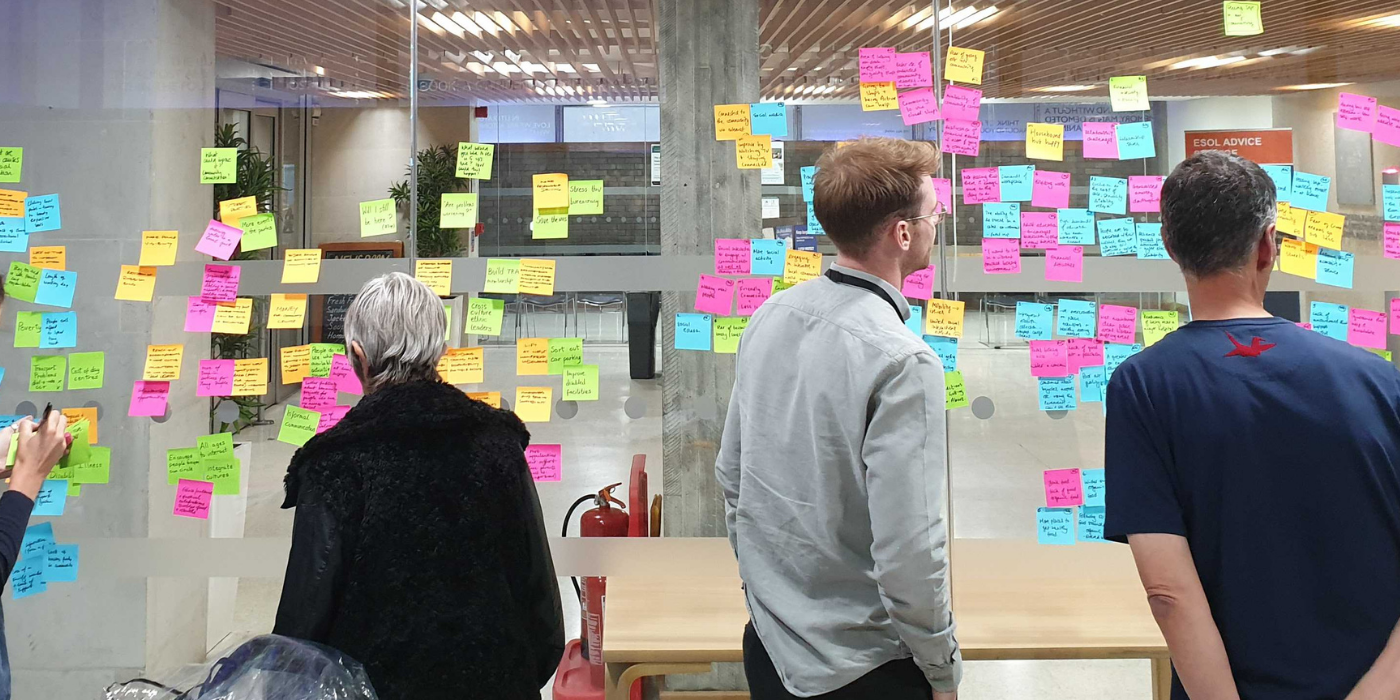The original intention of GOV.UK was to provide a single place for individuals and businesses to find government information and services. However, through our work with different departments, we’ve encountered an increasing need for websites that sit outside of that proposition, blurring the boundary between advice and official guidance. Often these websites give advice to businesses and organisations to help them meet and understand emerging priorities like sustainability and digitisation – it's long term content, needing greater technical flexibility.
In this post I’ll explore why DSIT and the Digital Centre for Government should review and provide new guidance on what departments should do when creating tools and advice that don’t fit within the GOV.UK proposition.
Where should these websites live?
Currently there is no official guidance for where departments should publish content that doesn’t belong on GOV.UK and departments are publishing content across different custom domain names and top-level domains (e.g. .co.uk, .org.uk, .com) or on subdomains of their departmental domain. This makes it difficult for users to understand if the website is official and trustworthy.
Instead, there could be a clear domain name and URL structure for departments to follow so users can trust the information they are reading. A subdomain of the publishing department or agency’s domain name (e.g. website.content.hmrc.gov.uk) would mean users could verify the information comes from the government or from an official body.
Reinventing the wheel
Creating these custom websites means that departments and agencies are having to use third-party publishing tools and platforms and create templates and components from scratch.
There are some excellent products and community-supported tools like LocalGov Drupal, which make this easier, but this could be bolstered by providing a set of templates and patterns and making it simpler to customise the design language, enabling flexible reuse of repurposed components that maintain consistency over uniformity.
Linking to GOV.UK
Should these websites be referenced from GOV.UK? How does a user on GOV.UK find the advice or information on one of these external websites? And how should the websites link back to GOV.UK?
DSIT and GDS could work more closely with some of the teams publishing these websites to understand how users are navigating and what problems they are facing.
Should departments be publishing independent websites at all?
Perhaps the proposition needs to be strengthened, involving close work with departments to understand their publishing needs, giving them support and maintaining the single government domain ideal.
If there is a need for advice for a particular industry sector, is a department the right organisation to publish that advice or should it come from an arms-length body or independent organisation?
Digitising Social Care
An example of how these challenges express themselves is our recent work on Digitising Social Care, a dedicated service providing advice, support and engaging the adult social care sector on technology and digital transformation.
We worked with the Department of Health and Social Care and NHS England to redesign and rebrand the Digitising Social Care website. Starting from discovery and through alpha, we audited the existing content, identified user needs and developed the information architecture and content strategy for the redesigned site.
We proposed a task-based approach to complement the content and designed and prototyped a decision tree tool based on GOV.UK’s smart answers format to help users create an action plan of tasks they should complete.
We used and adapted elements and components from the GOV.UK and NHS design systems and developed the branding, gaining insights from user research that showed the site should retain an independent identity to serve the needs of the social care industry.
The site was built using Localgov Drupal, so the component code from the design systems wasn’t available, but components were recreated and tested to ensure they remained accessible.
Not having clear guidelines from GDS meant we spent a lot of time establishing where the website should be hosted, what domain name to use and how to brand the website. At times, this felt like a circular argument, dealing with challenges from within the department and from GDS.
There were clear user needs that the content should be independent from government and the NHS — the website gives care providers advice on what tools and services to use but also there were trust issues within the care sector that meant branding the site under the NHS banner would have impacted its value to users.
Sustainability Support for Education
A further example is the DfE Sustainability Support for Education service we designed and built with partner agencies.
It falls outside of the GOV.UK proposition because it provides advice and guidance for people who work or volunteer within education settings and is another example of a site that sits in the grey area of publishing information but not being a transactional service. It was funded by DfE, but is not run or maintained by government.
It uses patterns and components that aren’t possible to use when publishing on www.gov.uk, but adapts and follows the Design System guidance and components.
The service has its own branding to differentiate itself from official government policy and to help with marketing it to users. Giving the service its own identity also meant it was better received by users, as they didn’t feel the policy was being forced on them.
Guidance from GDS on how to present information so it remains official but independent would have helped both projects to overcome some of the challenges they faced during development. Specific issues we encountered in both projects included push back on exemptions, domains and branding.
New sites are being developed outside of GOV.UK continuously, making this a poignant topic and something the newly aligned GDS could tackle as part of their new mission.
Our recent design blog posts
Transformation is for everyone. We love sharing our thoughts, approaches, learning and research all gained from the work we do.
-

-

Naming services in complex situations
Read blog post -

Using inclusive research approaches with Blood Cancer UK
Read blog post -

Designing for users who don’t exist (yet)
Read blog post
